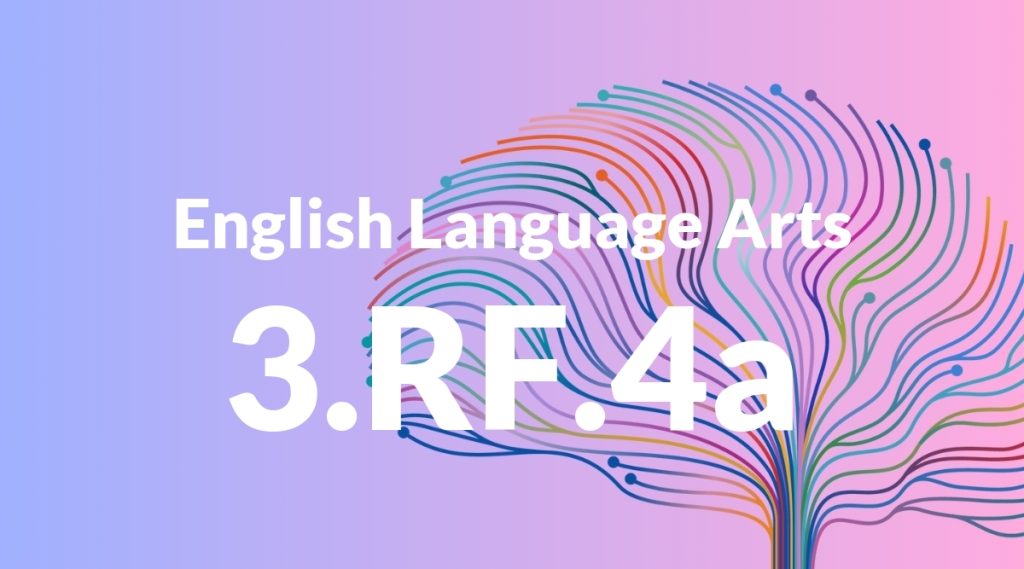Standard: 3.RF.4a – Read grade-level text with purpose and understanding.
Grade level: Grade 3
Subject: English Language Arts
Domain: Reading: Foundational Skills
Teacher Overview
This standard emphasizes the importance of reading with purpose and understanding at the third-grade level. It is crucial because it lays the foundation for more advanced reading skills, enabling students to engage with and comprehend various texts critically. Students need to be familiar with basic decoding skills, sight words, and simple sentence structures. They should also have some practice in reading and understanding simple texts.
After mastering this standard, students will be able to engage with more complex texts, infer meanings, and critically evaluate various types of literature. This skill is essential for their future academic success.
Common Misconception 1
A common misconception is that reading quickly is more important than understanding the text. This is incorrect because the primary goal of reading is comprehension. Speed can come later, but understanding the text’s meaning is essential.
Intervention 1
One effective intervention is to have students summarize what they read after each paragraph or section. This practice encourages them to slow down and focus on understanding the content.
Common Misconception 2
Another misconception is that understanding individual words is sufficient. This is incorrect because comprehension involves grasping the overall message or purpose of the text.
Intervention 2
Encourage students to ask themselves questions about the text’s purpose and to relate it to their own experiences or prior knowledge. This approach helps them see the bigger picture and understand the text more deeply.
Prerequisite Knowledge
Students should be able to decode words, recognize sight words, and understand basic sentence structures. They should also have some experience with reading simple texts and comprehending their meanings.
Subsequent Knowledge
After mastering this standard, students will be able to analyze more complex texts, infer meanings, and critically engage with various types of literature. They will also develop better fluency and comprehension skills, which are essential for higher-level reading and academic success.
Instructional Activities
- Have students read a short story and discuss its main idea.
- Use graphic organizers to help students break down and understand texts.
- Practice reading aloud and discussing the purpose of different texts.
- Implement partner reading activities where students summarize texts to each other.
- Incorporate comprehension questions into reading assignments.




